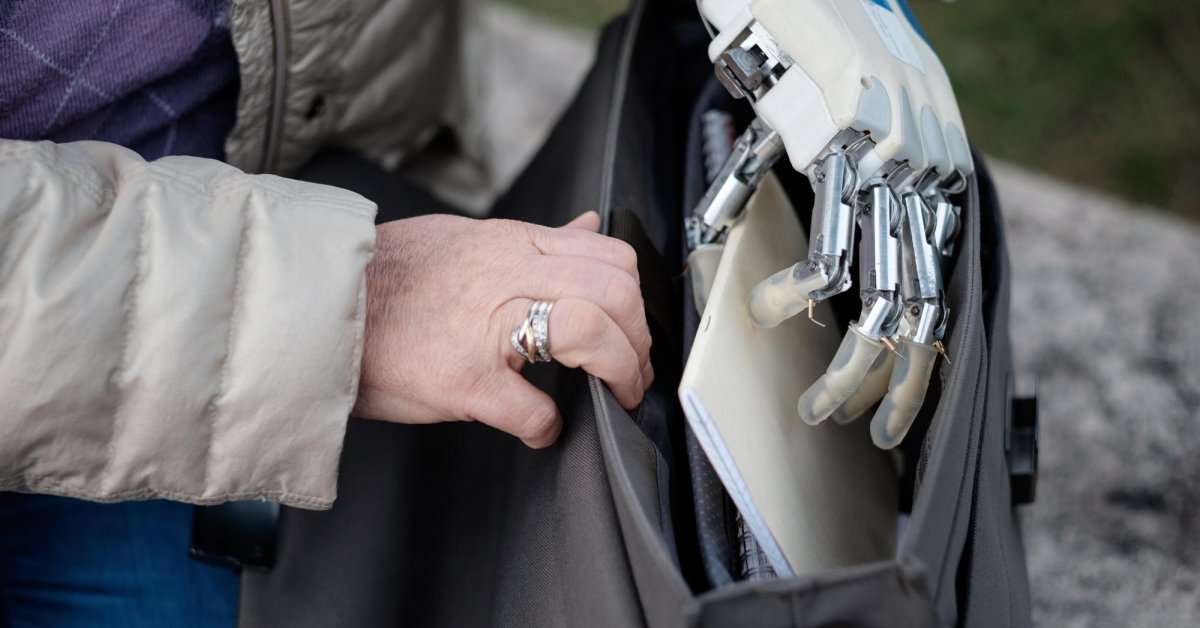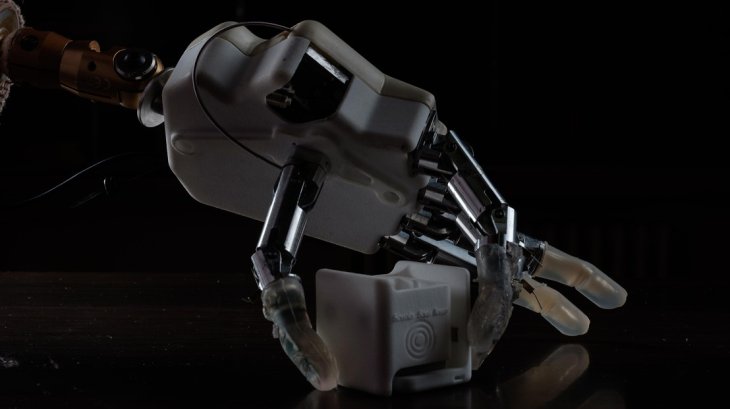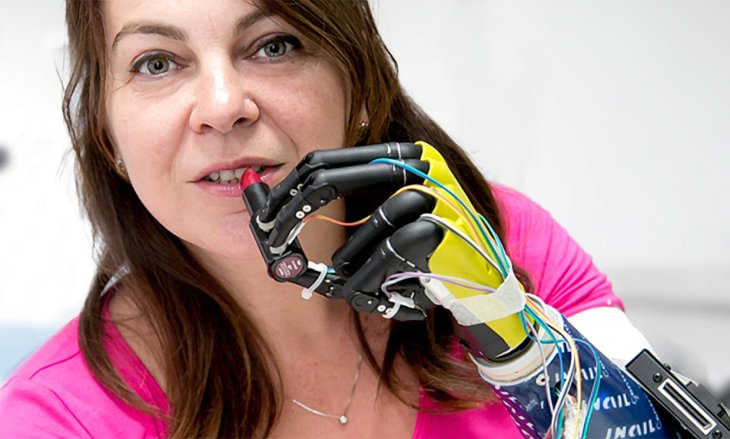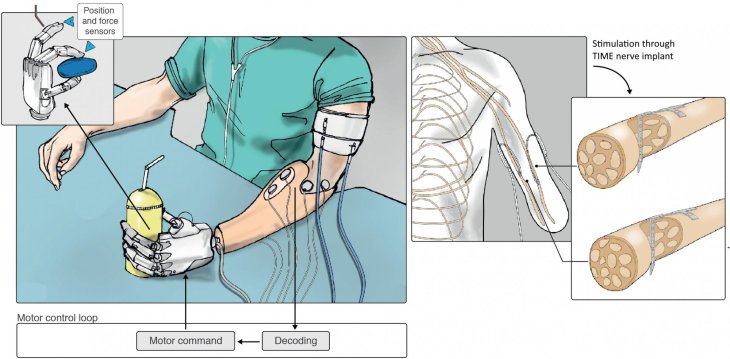With This Prosthesis, Amputees Can Have Feelings Like A Real Arm
Anita - Apr 30, 2019

Researchers have developed an artificial hand that allows amputees to regain their proprioception.
Scientists have made a prosthesis with which users can feel where it is as well as the fingers' positions. The improvement probably helps the amputees to use their artificial hands more naturally and effectively.

Amputees face many difficulties due to prosthesis rejection. Therefore, many of them do not use these prosthetic mechanical or electronic devices in their life because they can become complicated. In fact, prosthesis devices do not have true sensation or even if they do, it is nowhere near the level that people had before.
It is known that temperature and touch detection plays an important role, but it is more essential to simply know the positions of the limbs and what they are doing. Should you close the eyes, you are still able to tell how many you are holding up, where each digit is, whether they are gripping a big or small thing, etc. However, an artificial device or even the one integrated with your nerve system to give feedback cannot help you to know these above things. This means that users need to watch what they are doing all the time.
German, Italian and Swiss engineers and neurologists published details about their creation in the latest Science Robotics journal. It takes the current concept of transporting touch data to the brain via electrodes connected to the arm’s nerves and adapts it to give real-time feedback of proprioception.

Silvestro Micera from the École Polytechnique Fédérale de Lausanne said in the latest news release:

The researchers have spent a decade on engineering and demonstrating this possibility that is probably of huge benefit. Having an intuitive and natural understanding of your limbs’ positions could likely help artificial devices become much more comfortable and useful for the users.
The prosthetic hand sends its collected information to the brain via the pathways of nerves which would be sending touch normally to that area. However, it would be rather hard to really reproduce the pathways for the proprioception. Therefore, the team used sensory substitution instead. It uses other ways like usual touch to show modalities of different senses.

Image: TechCrunch
A simple example is a machine which touched your arm in a different place depending on the position of your hand. It is much finer in the matter concerning this research, but still essentially showing the position information as the touch information. It seems to be weird, but human brains are absolutely good at becoming adjusted to it.
As evidence, two amputees using this technique could determine the differences between four objects with different shapes which is being grasped with high accuracy (75%) and closed eyes. The opportunity would be 25%, which means that the sensation of holding objects with different sizes is very easy to know. Surprisingly, the scientists could add real touch feedback to the current pathways and people were not confused by it. Therefore, there is a precedent for multi-modal sensory feedback from a prosthesis limb.
It is known that the study still has clear limitations like the type and number of fingers that it could relay data from and the quality and kind of that information. And the process of the “installation” still seems invasive. However, although it is leading work, the research is still very global and iterative, developing by the small steps until all prosthetics, science, as well as a sudden, has made extremely important positive development. And the users of artificial limbs will also be making many big strides too.
Featured Stories

Features - Jul 01, 2025
What Are The Fastest Passenger Vehicles Ever Created?

Features - Jun 25, 2025
Japan Hydrogen Breakthrough: Scientists Crack the Clean Energy Code with...

ICT News - Jun 25, 2025
AI Intimidation Tactics: CEOs Turn Flawed Technology Into Employee Fear Machine

Review - Jun 25, 2025
Windows 11 Problems: Is Microsoft's "Best" OS Actually Getting Worse?

Features - Jun 22, 2025
Telegram Founder Pavel Durov Plans to Split $14 Billion Fortune Among 106 Children

ICT News - Jun 22, 2025
Neuralink Telepathy Chip Enables Quadriplegic Rob Greiner to Control Games with...

Features - Jun 21, 2025
This Over $100 Bottle Has Nothing But Fresh Air Inside

Features - Jun 18, 2025
Best Mobile VPN Apps for Gaming 2025: Complete Guide

Features - Jun 18, 2025
A Math Formula Tells Us How Long Everything Will Live

Features - Jun 16, 2025
Comments
Sort by Newest | Popular